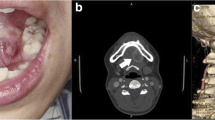Summary. Glomus tumours of the hand are benign tumours that arise from the neuromyoarterial apparatus. The most common site for a glomus tumour is in the distal phalanx. They frequently display a classic triad of symptoms – pain, tenderness and temperature sensitivity. Ten treated cases examined with magnetic resonance imaging (MRI) preoperatively are described. All were female with a mean age of 43 years. All except 2 suffered the classic triad of symptoms. The mean duration from onset of symptoms to therapeutic intervention was 7.4 years. MRI depicted the tumours in excellent detail and aided diagnosis in the 4 patients without subungual blue discolouration. The lesions showed a low signal on the T1-weighted image and a high signal on the T2-weighted image. All except 3 were located in the subungual region. All patients underwent surgical excision with pathological confirmation. The post-operative course was smooth and there were no sequelae. High resolution MRI, providing a clear contrast between tumorous and normal tissues, has proved to be a useful non-invasive method for imaging glomus tumours in the hand.
Résumé. La tumeur glomique de la main est une tumeur bénigne développée à partir de l’appareil neuro-myo-artériel. La localisation la plus fréquente de la tumeur glomique est la phalange distale. La symptomatologie est une triade classique: douleur, tuméfaction molle et sensibilitéà la température. 10 cas ont été examinés avec un examen en résonance magnétique nucléaire pré-opératoire. Les patients étaient de sexe féminin avec un âge moyen de 43 ans et ils présentaient tous sauf 2 la symptomatologie classique. La durée moyenne d’évolution avant le traitement était de 7.4 ans. La résonance magnétique nucléaire a toujours apporté une description précise de la tumeur et a permis le diagnostic chez les 4 patients qui ne présentaient pas la coloration bleue sous inguéale. La lésion montrait un bas signal en séquence T1 et un haut signal en séquence T2. Toutes les tumeurs, sauf 3, étaient localisées dans la région sous-inguéale. Tous les patients ont été traités par une excision chirurgicale avec confirmation anatomopathologique. Les suites chirurgicales ont toujours été simples, sans séquelle. L’examen en résonance magnétique nucléaire a montré une bonne différenciation entre le tissu tumoral et les tissus normaux et s’est avéré une méthode non invasive et pratique pour caractériser ces tumeurs glomiques de la main.
Similar content being viewed by others
Author information
Authors and Affiliations
Additional information
Accepted: 2 July 1996
Rights and permissions
About this article
Cite this article
Shih, TF., Sun, JS., Hou, SM. et al. Magnetic resonance imaging of glomus tumour in the hand. International Orthopaedics SICOT 20, 342–345 (1997). https://doi.org/10.1007/s002640050093
Issue Date:
DOI: https://doi.org/10.1007/s002640050093




